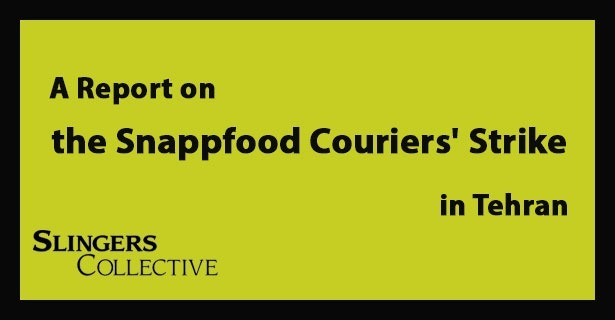The strike by Snappfood motorcycle couriers in Tehran, which began on October 20th, could not last more than a few days due to the precarious nature of their work. The primary reason for the strike is the reduction in fares resulting from the manipulation of route locations. “A delivery that should actually pay 40,000 tomans (~$9.5) is registered in the system as 35,000 tomans (~$8.32) for us, and this simply doesn’t make sense,” said one of the couriers. According to it, Snappfood has announced that it will increase the fares, but drivers believe this increase is pointless, as payments are calculated based on location data that is manipulated by the company to its own advantage. The riders’ protest intensified when repeated calls to customer support yielded no results. The company’s support team responded that a GPS malfunction was the cause of these fare differences and that they could do nothing about it. However, the drivers believe that if there is a genuine GPS malfunction, it should be affecting all other online platforms in Iran, not just Snappfood delivery riders. One of the delivery riders from District 6 who participated in the strike says, “If it’s a location problem, why is it only for us? Why don’t online taxis or other platforms have this problem? This means the company itself is manipulating the routes to reduce our fares.”
The lack of fare increases comes at a time when a large portion of the current fares is already spent on expenses that are essentially imposed on the couriers to keep them working. From the wear and tear and daily costs of motorcycle fuel, oil, tires, insurance, repairs, and even safety equipment, to the cost of a mobile phone, internet, food, and proper clothing, a worker must empty his pockets just to be able to continue working, before couriers can save a single rial for themself. The situation becomes even more disastrous when some couriers don’t even own the motorcycles they work with and must spend a significant part of their daily income on rent for the vehicle.
Snapp company not only steals from the drivers’ received fares but also accepts no responsibility for job security and the basic rights of delivery riders. This situation, combined with problems such as driving in summer heat and winter cold, long traffic jams, poor street conditions, and high accident statistics (as a result of which we occasionally hear news of Snapp workers death or being injured), the company’s lack of support for couriers when a conflict might arise between them and stores or customers, and most importantly, the absence of insurance and social protection, has caused all the physical and psychological costs of this job to weigh heavily on the workers, and any protest against the current situation is met with threats of account suspension.
Snapp, like other startup companies, is equipped with new methods of worker exploitation to increase profits from exploitation. All products of these companies are covered by copyright law, except for the invention of these new methods of exploitation, which they generously share with each other. The scale of the Islamic Republic’s neoliberal governance also consistently favors capital, whether its incomplete definition of the worker-employer relationship, its unconditional support for startups and so-called knowledge-based companies, or in labor laws and employer obligations.
Just as capitalism in Iran is rapidly equipping itself with the most sophisticated and modern tools for exploiting and controlling the workforce, constantly learning the latest methods of subjugating the working class in research centers, workers and the oppressed are also compelled to learn from one another and from the experiences of past strikes and struggles. In general, over the past few years, Snappfood couriers have repeatedly gone on strike and protested in response to unfair working conditions, wage cuts, and lack of job security. From the first strike in January 2019 aimed at preventing fare reductions, to larger strikes in 2019 and 2020, workers have managed, in some cases, to force the company to retreat. The most important development in the workers’ protest movement was the formulation of demands and making them public, especially in the February 2022 protest, where demands such as insurance, job security, the elimination of discrimination, and the rehiring of workers who had been fired. Overall, the strikes by Snappfood workers demonstrate a conscious effort to organize, state demands, and confront the complex forms of worker exploitation in the platform economy structure. To confront this complex and modern form of exploitation, a serious and purposeful set of actions must be put on the agenda. Publishing news and workers’ struggle experiences, creating networks and organizational links between delivery riders and other workers, and efforts to form organic connections can be an effective step toward strengthening the precarious workforce in Iran. This path highlights the need to form planning groups, strike committees, and independent organizations for Snappfood workers.



Comment here